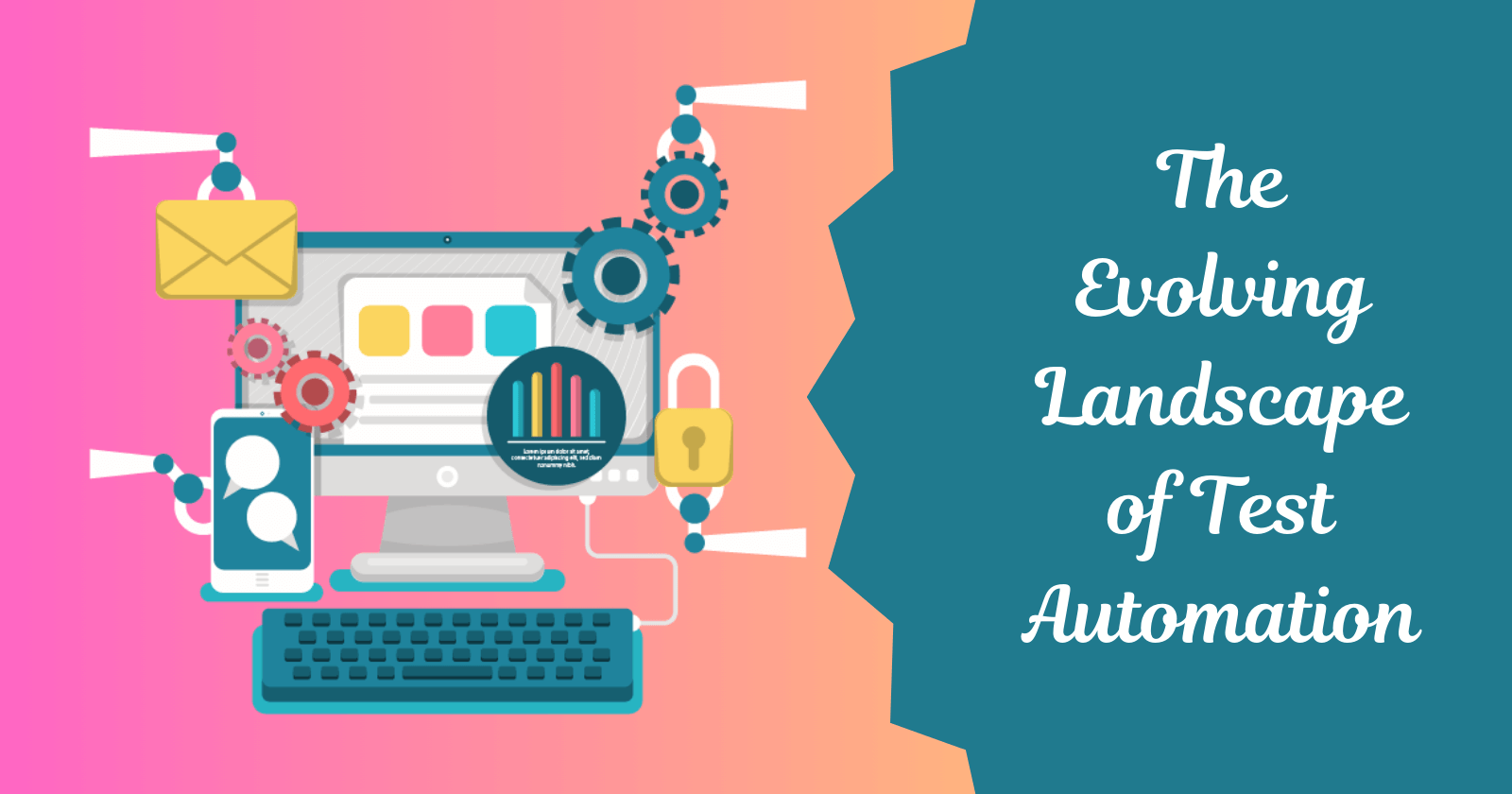The Evolving Landscape of Test Automation: Insights into Emerging Trends and Technologies
 Abhay
Abhay
To understand the future of test automation and its emerging trends and technologies, it's crucial first to know where the testing landscape is and where it's been. In the past decade, there has been a significant transformation in the enterprise IT environment. Previously, organizations relied on a few core financial, ERP, and HR systems, mainly deployed on-premise and managed internally. Today, with the proliferation of cloud computing and the adoption of diverse software suites, testing methodologies have had to evolve to keep pace with these changes.
Different Factors Shaping the Future of Automation Testing Enhanced Testing
Efficiency: Automated testing tools leverage AI and ML technologies to expedite the validation process, ensuring the accuracy of applications.
Agile and DevOps Practices: Automated testing becomes pivotal for rapid development cycles, with Agile and DevOps methodologies emphasizing speed. Cloud computing facilitates parallel testing, reducing wait times for results.
IoT and Mobile App Proliferation: The surge in IoT and mobile applications underscores the importance of automated testing in guaranteeing seamless functionality across diverse platforms.
CI/CD Integration: This necessitates robust testing protocols to prevent new code iterations from introducing errors or disrupting existing functionality, mandating automated testing integration.
Rise of Open-Source Tools: Open-source automated testing tools gain popularity due to their flexibility, cost-effectiveness, and collaboration, enabling broader accessibility and support within the testing community.
Evolution of Languages and Frameworks: The emergence of specialized programming languages and frameworks tailored for test automation streamlines the development of resilient test suites, minimizing the risk of future breakages.
In addressing future challenges, two key objectives stand out:
Expanding Test Coverage: There's a drive towards maximizing automation test coverage to assess application functionality and resilience comprehensively.
Simplifying Test Automation: Efforts are directed towards mitigating complexities and reducing time investments associated with test automation, ensuring smoother adoption and integration into development workflows.
Let's explore the test automation's latest trends to optimize your automation testing processes.
Impending Trends Influencing the Future of Automation Testing
Shift-Left Testing and QAOps
Shift-Left Testing: In agile methodologies, shift-left testing has emerged as the preferred strategy for identifying software bugs early in the development lifecycle. Key trends include:
Proactive creation of tests alongside development, facilitating bug detection within sprints.
Collaborative efforts between testers and developers to uncover worst-case scenarios and refine test data structures.
Earlier consideration of functional and non-functional tests in software development.
QAOps Testing
QAOps testing, often called Shift Right testing, complements the operational testing loop. Noteworthy trends encompass:
Immediate prioritization of automated ticket generation and production bugs as Priority 1 incidents, indicating gaps in test coverage.
Trend analysis to identify and address flaky tests, enhancing quality assurance.
Heightened business involvement in risk mitigation through report review and action prioritization.
Exploratory Testing
Exploratory testing allows testers to assess software functionality dynamically, aligning well with today's fast-paced delivery schedules. Its advantages include:
Efficient Workflow: Without extensive documentation, testing time is optimized, streamlining the process.
Automation Focus: Reduced manual testing allows resources to enhance automation efforts, especially in recurring areas.
Targeted Approach: Exploratory testing targets features not yet automated, ensuring comprehensive testing coverage.
As automation becomes prevalent, exploratory testing is a complementary strategy, addressing areas awaiting automation integration.
Continuous Testing
Today's businesses, operating across diverse deployment models like SaaS, demand continuous automation. Challenges arise from vendors' unique testing schedules and internal development pressures. Traditional methods fall short.
The solution?
Early adoption of automation, enabling earlier testing and faster product rollouts. Effective automation is essential for maintaining quality standards through iterative testing in agile environments.
Cloud-based Cross-browser Testing
In today's tech landscape, developers no longer write separate code for different devices and browsers. Automating testing across multiple browsers and environments is paramount, thanks to cross-platform development advancements.
Enterprises embrace cloud-based cross-browser testing to cut testing infrastructure costs and boost scalability. This approach empowers QA teams to test web apps seamlessly across various device-OS-browser combinations, ensuring the delivery of top-notch products.
AI-driven Software Test Automation
Artificial intelligence is making significant strides, and the software test automation sector is quickly catching up. Already, AI-powered tools are available, simplifying the creation and maintenance of automated test cases.
Looking ahead, artificial intelligence promises to streamline test case creation and maintenance, even enabling self-healing capabilities. Prominent tools like HeadSpin exemplify this future, offering comprehensive solutions that prioritize quality without compromising speed to market.
The HeadSpin AI-driven Platform facilitates test case creation and maintenance and seamlessly integrates with popular CI/CD tools for efficient reporting. Additionally, it provides cloud-based test hosting and a test lab with a diverse range of devices and resolutions for thorough application testing.
Robotic Process Automation (RPA)
RPA and automated testing share efficiency-driven solutions, needing meticulous setup—tools like process discovery aid accurate automation. Essential features include orchestration, scheduling, analytics, reporting, versioning, and self-healing. A recent Forrester report emphasizes their symbiotic relationship, enhancing innovation and scalability. While RPA streamlines routine tasks, scalable automation maximizes its benefits.
NLP Based Automation
In scriptless test automation, a recent innovation is NLP (Natural Language Processing). NLP streamlines test case automation by allowing users to write test steps in natural language, minimizing the learning curve and backend configurations.
This approach democratizes test automation, as individuals can utilize it across various roles, including manual testers, developers, and project managers. Involving more stakeholders in the automation process enhances test coverage and reduces resource costs.
Given the widespread adoption of NLP in human interactions across different fields, the future of the test automation industry is poised to follow suit, embracing this user-friendly approach.
Codeless Test Automation
Codeless test automation is emerging as a transformative trend in software testing, set to redefine the quality assurance landscape. This innovative method eliminates the necessity for intricate coding skills, empowering testers from various backgrounds to seamlessly design and execute tests via intuitive user interfaces. By leveraging drag-and-drop functionalities and pre-built components, codeless automation accelerates test creation, fosters collaboration, and reduces reliance on specialized programming expertise. With its accessibility and efficiency, codeless automation testing promises to democratize the testing process, facilitating faster delivery cycles and ensuring superior software quality across industries.
End-to-end API Testing Automation
The demand for automated API testing is rising as APIs are the backbone of modern microservices architectures. In 2024, robust API testing automation must cover functional validation, load and performance testing, security testing, contract validation, and service virtualization. Leading API testing platforms like Karate, Postman, Parasoft, and Tricentis offer auto-generated test cases and tools like Cypress and Playwright, which will witness increased adoption for API testing.
Takeaways
Automation testing is pivotal in enhancing product delivery timelines and bolstering software quality through detailed error reporting. Both large enterprises and burgeoning startups can capitalize on automation testing services to streamline operations, cut costs, and enhance customer satisfaction. It's undeniable: automation testing represents the future of software testing. Keeping up with the latest trends is essential for businesses to maintain their competitive edge.
Platforms like HeadSpin offer advanced AI and ML capabilities, ensuring robust test automation processes. With real bare metal devices and global testing locations, HeadSpin enables organizations to identify and address performance issues, swiftly enhancing digital experiences. Collaborative efforts supported by HeadSpin's secure cloud environment facilitate end-to-end automated testing, paving the way for improved performance outcomes.
Source: The content of this post was first published here https://www.geeksforgeeks.org/community/post/35962/the-evolving-landscape-of-test-automation-insights-into-emerging-trends-and-technologies/
Subscribe to my newsletter
Read articles from Abhay directly inside your inbox. Subscribe to the newsletter, and don't miss out.
Written by

Abhay
Abhay
I am a digital marketer with 13+ yrs. experience. I have written so many blogs and also have sound knowledge in software testing.